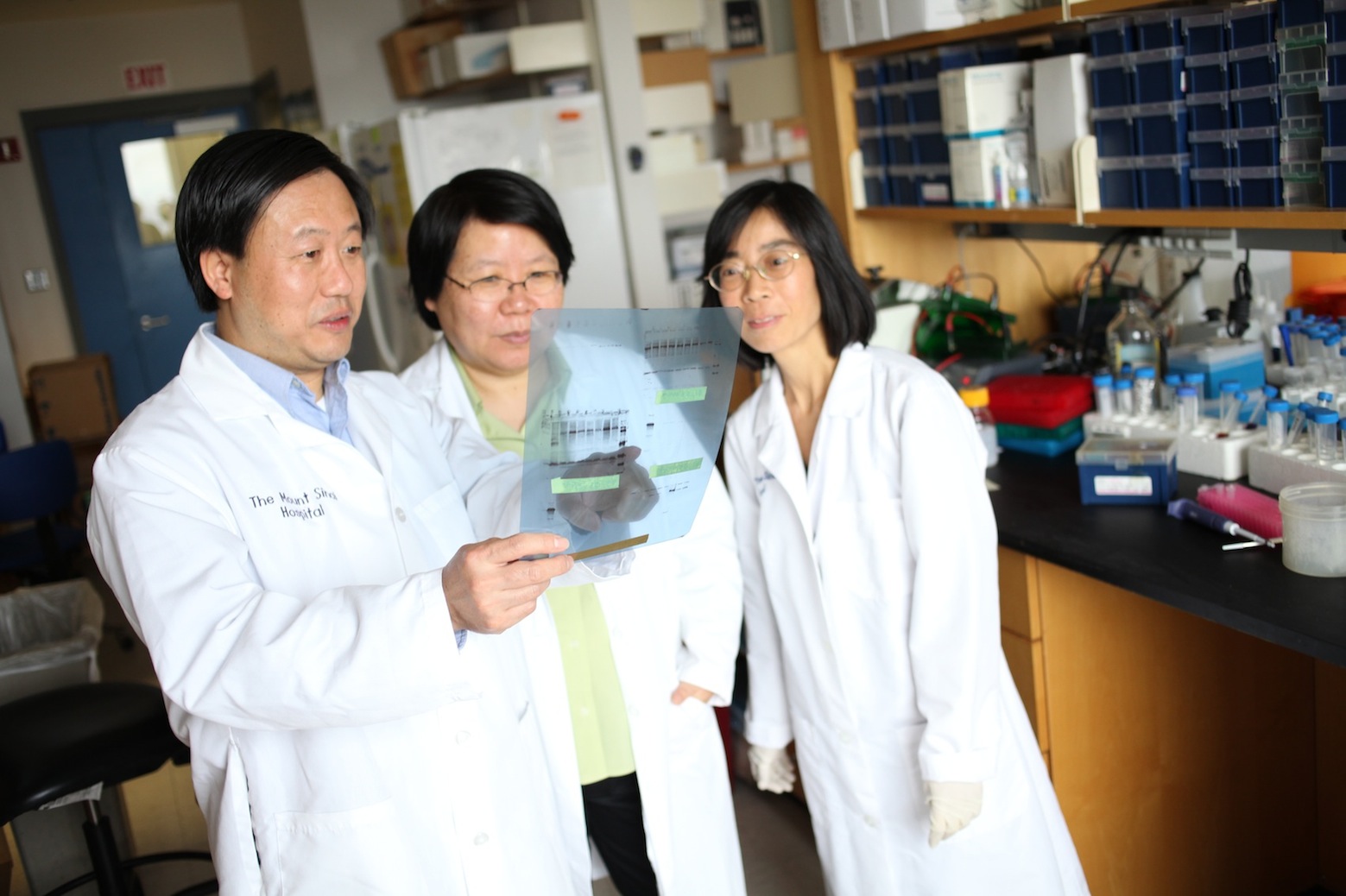- Xu Y, Wang K, Yu Q. (2016) FRMD6 inhibits human glioblastoma growth and progression by negatively regulating activity of receptor tyrosine kinases. Oncotarget. 10.18632.
- Brunckhorst, MK, Xu Y, Lu, R, Gu, H, and Yu, Q. (2014). Angiopoietins promote ovarian cancer progression by establishing a procancer microenvironment. Am J.Pathol.184(8):2285-96.
- Gong Y, Scott E, Lu, R, Xu Y, Oh WK, and Yu Q. (2013). TIMP-1 Promotes Accumulation of Cancer Associated Fibroblasts and Cancer Progression. PLoS One. 8(10):e77366.
- Lucas B. Murray, Ying-Ka Ingar, and Qin Yu (2012). Merlin is a Negative Regulator of Human Melanoma Growth. PLoS One 7(8): e43295.
- Brunckhorst, MK, Lerner, D., Wang, S., and Yu, Q (2012). AT-406, an orally active antagonist of multiple Inhibitor of Apoptosis Proteins, inhibits progression of human ovarian cancer. Cancer Biology & Therapy, 2012 Jul 1;13(9).
- Stamenkovic I and Yu Q (2010) Merlin, a “magic” linker between extracellular cues and intracellular signaling pathways that regulate cell motility, proliferation, and survival. Curr Protein Pept Sci. 11(6):471-84.
- Brunckhorst MK, Wang H, Rong Lu., and Yu Q. (2010). Angiopoietin-4 promotes glioblastoma progression by enhancing tumor cell viability and angiogenesis. Cancer Res 70(18):7283-93.
- Xu Y, Stamenkovic I, and Yu Q (2010) CD44 attenuates activation of the Hippo signaling pathway and is a prime therapeutic target for glioblastoma. Cancer Res 70: 2455-2464.
- Stamenkovic I and Yu Q (2009) Shedding Light on Proteolytic Cleavage of CD44: the Responsible Sheddase and Functional Significance of Shedding. J Invest Dermatol. Jun;129(6):1321-4.
- Lau YK, Murray LB, Houshmandi SS, Xu Y, Gutmann DH, Yu Q (2008). Merlin is a potent inhibitor of glioma growth. Cancer Res. 2008 Jul 15;68(14):5733-42.
- Bai, Y., Liu, Y. J., Wang H., Xu, Y., Stamenkovic I., and Yu, Q. (2007). Inhibition of thehyaluronan-CD44 interaction by merlin contributes to the tumor suppressor activity of merlin. Oncogene 26, 836–850
- Liu, Y.J*., Xu, Y*., and Yu, Q. (2006) Full-length ADAMTS-1 and the ADAMTS-1 fragments play the opposite roles in tumor metastasis. Oncogene 25, 2452–2467.
- Yu, Q. (2005) The dynamic roles of angiopoietins in tumor angiogenesis. Future Oncology. 1(4): 475-484.
- Yu, Q., and Stamenkovic, I. (2004) Transforming Growth Factor-beta facilitates breast carcinoma metastasis by promoting tumor cell survival. Clinical and experimental metastasis. Clin. Exp. Metastasis. 2004; 21(3):235-42.
- Xu, Y., Liu, Y.J., and Yu, Q. (2004) Angiopoietin-3 Inhibits Pulmonary Metastasis by Inhibiting Tumor Angiogenesis. Cancer Res. 64: 6119-6126.
- Xu, Y., Liu, Y.J., and Yu, Q. (2004) Angiopoietin-3 is tethered on cell surface via heparan sulfate proteoglycans. J. Biol. Chem. 279: 41179-41188.
- Xu, Y., and Yu, Q. (2003). E-cadherin negatively regulates CD44-hyaluronan binding, andCD44-mediated tumor invasion and branching morphogenesis. J. Biol. Chem. 278: 8661-8668.
- Xu, Y., and Yu, Q. (2001). Angiopoietin-1, unlike angiopoietin-2, is incorporated into the extracellular matrix via its linker peptide region. J. Biol. Chem. J Biol. Chem. 276: 34990-34998.
- Toole, B. P., Yu, Q., and Underhill, C. B (2001). Hyaluronan and hyaluronan-binding proteins. Probes for specific detection. Methods Mol. Biol. 171, 479-485.
- Yu, Q., and Stamenkovic, I. (2001). Angiopoietin-2 is implicated in regulation of tumor angiogenesis. Amer. J. Pathol. 158: 563-570.
- Yu, Q., and Stamenkovic, I. (2000). Cell surface-localized matrix metalloproteinase-9 (MMP-9) proteolytically activates TGF-beta and promotes tumor invasion and angiogenesis. Genes & Dev. 14,163-176.
- Peterson, R. M., Yu, Q., Stamenkovic, I., and Toole, B. P. (2000). Perturbation of hyaluronan interaction by soluble CD44 inhibits growth of murine mammary carcinoma cells in ascites. Amer. J. Pathol. 156 (6), 2159-67.
- Yu, Q., and Stamenkovic, I. (1999). Localization of matrix metalloproteinase 9 (MMP-9) tothe cell surface provides a mechanism for CD44-mediated tumor invasion. Genes & Dev. 13, 35-48.
- Yu, Q., Toole, B. P., and Stamenkovic, I. (1997). Induction of apoptosis of metastatic mammary carcinoma cells in vivo by disruption of tumor cell surface CD44 function. J. Exp. Med. 186, 1985-1996.
- Yu, Q., and Toole, B. P. (1997). Common pattern of CD44 isoforms is expressed in morphenogenetically active epithelia. Dev. Dyn. 208, 1-10.
- Yu, Q., Grammatikakis, N., and Toole, B. P. (1996). Expression of multiple CD44 isoforms in the apical ectodermal ridge of the embryonic mouse limb. Dev. Dyn. 207, 204-214.
- Yu, Q., and Toole, B. P. (1996). An new alternatively spliced exon between v9 and v10 provides a molecular basis for synthesis of soluble CD44. J. Biol. Chem. 271, 20603-20607.
- Yu, Q., and Toole, B. P. (1995). Biotinylated hyaluronan as a probe for detection of binding proteins in cells and tissues. BioTechniques. 19, 122-129.
- Grammatikakis, N., Grammatikakis, A., Yoneda, M., Yu, Q., Banerjee, SD., and Toole, B. P. (1995). A novel glycosaminoglycan-binding protein is the vertebrate homologue of the cell cycle control protein, Cdc37. J. Biol. Chem. 270, 16198-16205.
- Yu, Q., Banerjee, SB., and Toole, B. P.(1992). The role of hyaluronan-binding protein in assembly of pericellular matrices. Dev. Dyn. 193, 145-151.

